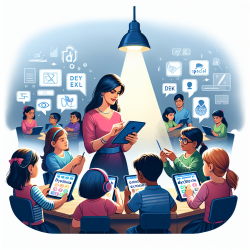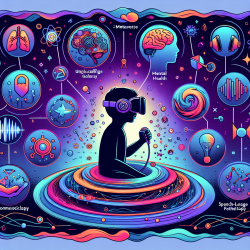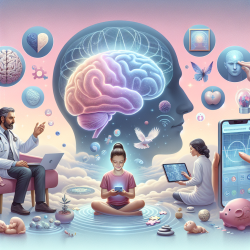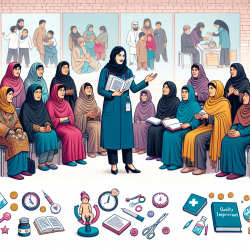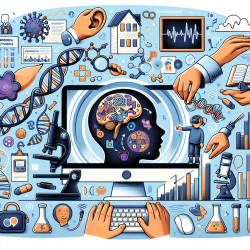Understanding Eye-Tracking Technology
Eye-tracking technology measures where and how long a person focuses their gaze, providing valuable data on attention, cognitive load, and information processing. The precision of modern eye trackers, such as those presented at SWAET 2018, allows for detailed analysis of eye movements, including fixations, saccades, and microsaccades. This data is crucial for understanding how children process visual information during therapy sessions.Key Findings from SWAET 2018
The research presented at SWAET 2018 covered various applications of eye-tracking technology, from language processing to reading comprehension and special populations. Here are some highlights:- Language Processing: Eye-tracking data revealed that different linguistic constructions modulate the time and order in which elements of a scene are accessed, suggesting that tailored language interventions can be developed based on how children visually process spoken and written language.
- Reading Comprehension: Studies showed that eye movements provide real-time measures of cognitive processing during reading, highlighting the importance of visual attention in literacy development. Practitioners can use this data to identify specific reading challenges and customize interventions.
- Special Populations: Eye-tracking technology proved effective in identifying oculomotor problems in children, which can often be misdiagnosed as dyslexia or ADHD. This underscores the need for comprehensive visual assessments in therapeutic settings.
Implementing Eye-Tracking Insights in Online Therapy
To harness the power of eye-tracking technology in online therapy, practitioners can follow these steps:- Integrate Eye-Tracking Tools: Incorporate eye-tracking software into online therapy platforms to monitor children's gaze patterns during sessions. This can help identify areas where children struggle to maintain attention or process information.
- Analyze Gaze Data: Use the data to tailor interventions based on individual needs. For example, if a child has difficulty focusing on text, practitioners can adjust the visual presentation or provide additional support for reading comprehension.
- Train Practitioners: Ensure that therapists are trained in interpreting eye-tracking data and applying it to their practice. This will enable them to make data-driven decisions and optimize therapy outcomes.
- Collaborate with Researchers: Engage with researchers to stay updated on the latest advancements in eye-tracking technology and its applications in speech-language pathology. This collaboration can lead to the development of innovative therapeutic approaches.
Encouraging Further Research
While the insights from SWAET 2018 are invaluable, continuous research is essential for advancing the field. Practitioners are encouraged to participate in research studies and contribute to the growing body of knowledge on eye-tracking applications in therapy. By doing so, they can help refine techniques and develop new strategies for improving child outcomes.Conclusion
Eye-tracking technology offers a powerful tool for enhancing online therapy services. By integrating the findings from SWAET 2018 into their practice, practitioners can make data-driven decisions that lead to better outcomes for children. Continuous research and collaboration with experts will further advance the field, ensuring that children receive the most effective and personalized interventions.To read the original research paper, please follow this link: SWAET 2018.



